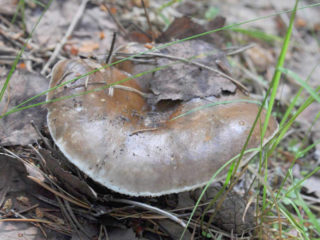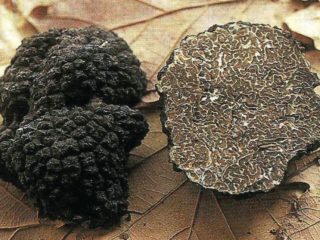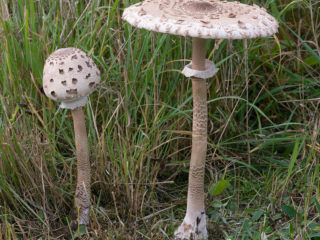Content
Telephora tassel is a rather rare mushroom with a cap-shaped fruiting body. Belongs to the class Agaricomycetes, family Telephoraceae, genus Telephora. The name in Latin is Thelephora penicillata.
What does a tassel telephore look like?
Thelephora penicillata has an attractive appearance. The fruiting body is a bunch of dark fluffy tassels, lighter at the tips. Rosettes growing on stumps look more attractive than those growing on the ground. The latter look crumpled and trampled, although no one touches them.The color of the rosettes is violet-brown, violet, reddish-brown at the base, turning brownish towards the branched tips. The highly branched tips of the rosettes end in sharp spines of a white, creamy or off-white color.
The size of telephora rosettes reaches 4-15 cm in width, the length of the spines is 2-7 cm.
The flesh of the mushroom is brown, fibrous and soft.
The spores are warty, elliptical in shape, ranging in size from 7-10 x 5-7 microns. The spore powder is purple-brown.
Is the mushroom edible or not?
Telefora is not suitable for consumption. Its pulp is thin and tasteless, with the smell of dampness, earth and anchovy. It is of no gastronomic interest. Toxicity has not been confirmed.
Where and how does it grow
In Russia, Telephora tassel is found in the middle zone (in the Leningrad and Nizhny Novgorod regions). Distributed on mainland Europe, Ireland, Great Britain, and also in North America.
Grows on plant remains (fallen branches, leaves, stumps), rotten trees, soil, forest litter. Settles in damp coniferous, mixed and broad-leaved forests next to alder, birch, aspen, oak, spruce, and linden.
Telephora tassel likes acidic soils and is sometimes found in areas covered with moss.
The fruiting season is from July to November.
Doubles and their differences
Telephora tassel is similar to Thelephora terrestris (Telephora terrestris). The latter has a darker color, loves sandy, dry soils, and often grows next to pines and other conifers, less often with broad-leaved trees. Sometimes seen near eucalyptus trees. Found in cutting areas and forest nurseries.
The fruiting body of the mushroom Thelephora terrestris has rosette-shaped, fan-shaped or shell-shaped caps that grow together radially or in rows. They produce large, irregularly shaped formations. Their diameter is about 6 cm; when fused, it can reach up to 12 cm. They can be prostrate and bent. Their base is narrowed, from which the cap rises slightly. They have a soft structure and can be fibrous, scaly, furrowed or pubescent. At first, their edges are smooth, but over time they become carved, with grooves. The color changes from the center to the edges - from red-brown to dark brown, at the edges - grayish or whitish. On the underside of the cap there is a hymenium, often warty, sometimes radially ribbed or smooth, its color is chocolate brown or amber red. The flesh of the cap has the same color as the hymenium, it is fibrous, about 3 mm thick. The smell of the pulp is earthy.
Terrestrial telephora is not eaten.
Conclusion
It is believed that Telephora tassel is a saprophytic destructor, that is, an organism that processes the dead remains of animals and plants and transforms them into the simplest organic and inorganic compounds, without leaving excrement. Mycologists do not yet have a consensus on whether Thelephora penicillata is a saprophyte or just forms mycorrhiza (fungal root) with trees.










